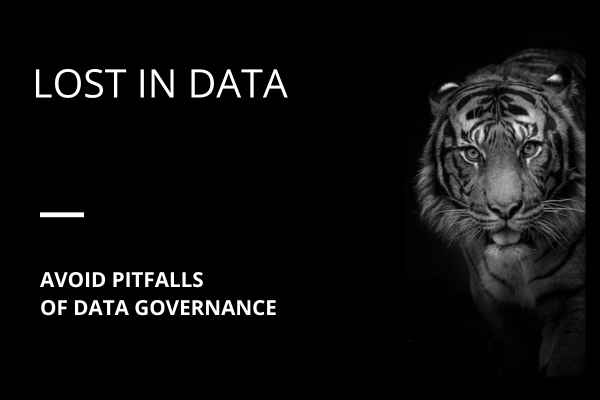
In an era where data is often named the ’new oil’, ensuring its proper governance has become a priority for businesses worldwide. However, many companies dive headfirst into the realm of Data Governance without proper preparation, leading to inefficiencies, mismanagement, and lost investments. This often leads to wasted efforts and resources, with many businesses struggling to manage their data effectively. This whitepaper explores these challenges and proposes a more practical approach to navigating them.
1.The Rush into Data Governance
1.1. Jumping the Gun
Many companies, in their eagerness to harness the power of data, rush to establish Data Governance frameworks even before they have the right tools or organizational structures in place. This is similar to building a house without laying a proper foundation. It is mostly connected to market pressure to outpace the competitors, even without a clear plan. The result? A cycle of redefining strategies and frameworks, draining resources without giving tangible results.
The root of these problems often lies in a disconnect between strategic intentions and practical implementation. Consulting-driven transformations tend to create endless changes and rack up significant consultancy fees, without a definitive end goal. This inefficiency stems from an over-reliance on consulting, instead of focusing on practical, scalable solutions from the start. By adopting a more pragmatic approach, avoiding the trap of redefining every process from the ground up, companies can achieve a more efficient and sustainable model of Data Governance.
1.2. Navigating a Siloed Landscape with IT Legacy Baggage
A common scenario in many organizations is the presence of siloed departments and outdated IT systems, which complicates the process of Data Governance. According to a McKinsey report, effective Data Governance can significantly reduce the time employees spend on non-essential tasks, by up to 74%.
Underlying Risks:
- Data inconsistencies and inaccuracies, different definitions used per different users.
- Reduced trust in data-driven decisions.
- Reinforced complexities due to the lack of a unified data strategy.
2.The Illusion of Service-Driven Data Governance
Many companies seek external service providers for Data Governance due to perceived internal skill gaps. However, this approach can lead to high costs and unclear outcomes, mainly because of three reasons: (1) generic solutions that don’t fit specific company needs, (2) significant consultancy fees and ongoing dependency costs, and (3) limited internal buy-in and insufficient knowledge transfer to company staff.
Underlying Risks:
- Draining financial resources without a clear return on investment.
- Introducing even more complexity into an already complicated data landscape.
- Delaying the company’s progress in digital transformation.
3. A Pragmatic Path Forward
3.1. End-to-End Data Management Solutions
Rather than addressing issues service by service, companies should embrace comprehensive solutions that manage data from end-to-end. This approach, significantly supported by advanced technology, ensures that Data Governance is seamlessly integrated into the entire data lifecycle. By leveraging technological tools and platforms, companies can more effectively manage data from collection and storage to processing and visualization, making Data Governance an essential part of their operations.
Benefits:
- Enhanced data consistency and reliability.
- Streamlined data operations with reduced redundancies.
- Clearer visibility into data flow and governance.
3.2. Phased Implementation
Instead of attempting a massive “Big Bang” transformation, companies should consider phased implementation. By addressing challenges service by service, businesses can ensure smoother transitions, manage risks and budgets better and achieve quicker wins.
Benefits:
- Minimized disruptions to existing operations.
- Incremental gains that boost stakeholder confidence.
- Flexibility to adapt and pivot as the digital landscape evolves.
Conclusion
The digital era calls, but the path forward is full of pitfalls. The key to navigating the Data Governance maze lies in recognizing the shortcomings of current practices and embracing a pragmatic, solutions-driven approach. By doing so, companies can truly harness the power of their data and steer confidently into the future.


Recent Comments